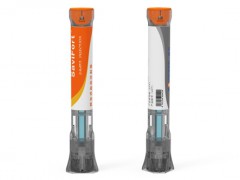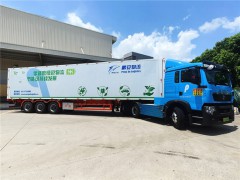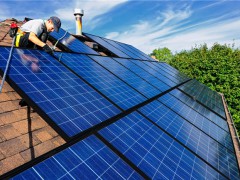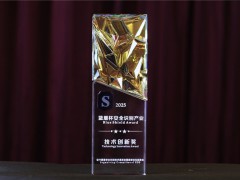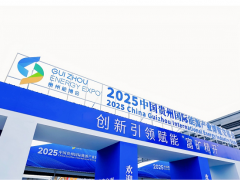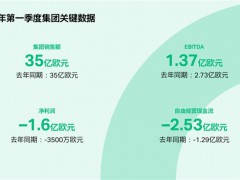據(jù)油價(jià)網(wǎng)1月16日消息稱,國(guó)際能源署(IEA)在本周的一份新報(bào)告中表示,隨著世界進(jìn)入一個(gè)新的工業(yè)時(shí)代,清潔能源技術(shù)制造將引領(lǐng)潮流,在2050年實(shí)現(xiàn)凈零排放的情況下,到2030年,清潔能源技術(shù)和基礎(chǔ)設(shè)施的總投資必須超過(guò)4.5萬(wàn)億美元。所需投資規(guī)模空前,需要各國(guó)制定產(chǎn)業(yè)戰(zhàn)略,在所有區(qū)域、技術(shù)和供應(yīng)鏈上調(diào)動(dòng)這些投資。IEA表示,任務(wù)艱巨,而且由于原材料和材料加工高度集中在少數(shù)幾個(gè)國(guó)家,風(fēng)險(xiǎn)也更大。
該機(jī)構(gòu)表示,阻礙清潔能源技術(shù)強(qiáng)勁發(fā)展的其他障礙包括政策和供應(yīng)鏈瓶頸。
IEA在報(bào)告中表示:“政策和監(jiān)管風(fēng)險(xiǎn)、對(duì)示范性和首創(chuàng)項(xiàng)目缺乏信心、項(xiàng)目管道的不確定性、貨幣穩(wěn)定性等更廣泛的宏觀經(jīng)濟(jì)因素,以及地緣政治事件,都可能導(dǎo)致瓶頸發(fā)生。”
該國(guó)際機(jī)構(gòu)指出,對(duì)清潔能源的投資正在持續(xù)增長(zhǎng),但如果世界有機(jī)會(huì)在2050年實(shí)現(xiàn)凈零排放,就需要進(jìn)一步增加,特別是在這十年。
去年,清潔能源投資達(dá)到1.4萬(wàn)億美元,比2021年增長(zhǎng)10%,占能源部門總投資增長(zhǎng)的70%。
然而,國(guó)際能源署表示,化石燃料仍占全球一次能源結(jié)構(gòu)的80%。
能源轉(zhuǎn)型取決于清潔能源技術(shù)的供應(yīng)鏈。將需要多達(dá)1.2萬(wàn)億美元的累計(jì)投資,以使供應(yīng)鏈具備足夠的在線產(chǎn)能,從而實(shí)現(xiàn)NZE情景(凈零排放情景)的2030年目標(biāo)。目前宣布的投資約占這一估計(jì)的60%。
IEA表示,考慮到從決策到生產(chǎn)的周期,大部分投資將在2023—2025年期間進(jìn)行,平均每年2700億美元,這幾乎是2016—2021年平均投資速度的7倍。
“建立新供應(yīng)鏈和擴(kuò)大現(xiàn)有供應(yīng)鏈的準(zhǔn)備時(shí)間可能很長(zhǎng),目前需要政策干預(yù)。開(kāi)礦或部署清潔能源基礎(chǔ)設(shè)施可能需要十多年的時(shí)間。建立工廠或擴(kuò)大大規(guī)模生產(chǎn)技術(shù)的運(yùn)營(yíng)只需要大約1至3年。”
除了需要擴(kuò)大投資,現(xiàn)在就加大投資,以便在2030年啟動(dòng)和運(yùn)行項(xiàng)目外,世界還需要實(shí)現(xiàn)清潔能源供應(yīng)鏈的多樣化。
國(guó)際能源機(jī)構(gòu)表示:“關(guān)鍵礦產(chǎn)的生產(chǎn)在地理上高度集中,引發(fā)了人們對(duì)供應(yīng)安全的擔(dān)憂。”
曹海斌 摘譯自 油價(jià)網(wǎng)
原文如下:
IEA: World Needs $4.5 Trillion Investment In Clean Energy Tech By 2030
As the world enters a new industrial age, where technology manufacturing for clean energy will lead the way, total investments in clean energy technologies and infrastructure have to top $4.5 trillion in 2030 under the net-zero emissions by 2050 scenario, the International Energy Agency (IEA) said in a new report this week. The unprecedented scale of required investment will need industrial strategies from the countries to mobilize those investments across all regions, technologies, and supply chains. The task is enormous, and risks are also greater due to the heavily concentrated raw materials and material processing in a handful of countries,the IEA said.
Other hurdles to a robust development of clean energy technology include policy and supply chain bottlenecks, according to the agency.
"Bottlenecks can occur as a result of policy and regulatory risks, a lack of confidence in demonstration and first-of-a-kind projects, uncertainty about project pipelines, wider macroeconomic factors such as currency stability, and geopolitical events," the IEA said in its report.
Investment in clean energy is continuously rising, but it needs to rise much more, especially this decade if the world has a chance to reach net-zero by 2050, the international agency noted.
Last year, clean energy investment hit $1.4 trillion, a 10% increase compared to 2021, and representing 70% of the growth in total energy sector investment.
Yet, fossil fuels still account for 80% of the primary energy mix in the world, the IEA said.
The energy transition depends on the supply chains in clean energy technology. As much as $1.2 trillion of cumulative investment would be required to bring enough capacity online for the supply chains to be on track with the NZE Scenario's 2030 targets. Currently announced investments cover around 60% of this estimate.
Considering the lead times from decision to production, most investments will have to be made during 2023-2025, at an average of $270 billion per year, which is nearly seven times the average rate of investment over 2016-2021, the IEA said.
"Lead times to establish new supply chains and expand existing ones can be long, requiring policy interventions today. Opening mines or deploying clean energy infrastructure can take more than a decade. Building a factory or ramping up operations for mass-manufactured technologies requires only around 1-3 years."
Apart from the need to scale up investments, and to do that now for projects to be up and running in 2030, the world needs to diversify its clean energy supply chains.
"The production of critical minerals is highly concentrated geographically, raising concerns about security of supplies," the IEA says.
免責(zé)聲明:本網(wǎng)轉(zhuǎn)載自其它媒體的文章及圖片,目的在于弘揚(yáng)石化精神,傳遞更多石化信息,宣傳國(guó)家石化產(chǎn)業(yè)政策,展示國(guó)家石化產(chǎn)業(yè)形象,參與國(guó)際石化產(chǎn)業(yè)輿論競(jìng)爭(zhēng),提高國(guó)際石化產(chǎn)業(yè)話語(yǔ)權(quán),并不代表本網(wǎng)贊同其觀點(diǎn)和對(duì)其真實(shí)性負(fù)責(zé),在此我們謹(jǐn)向原作者和原媒體致以崇高敬意。如果您認(rèn)為本站文章及圖片侵犯了您的版權(quán),請(qǐng)與我們聯(lián)系,我們將第一時(shí)間刪除。

